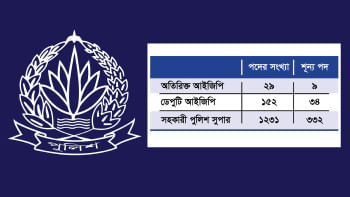Making Bangladesh a regional internet hub

Bangladesh simultaneously exports and imports international internet bandwidth to and from the same country – India. Such unique-in-the world bandwidth trading started with import when Bangladesh was linked with the single submarine cable: SEA-ME-WE4 (South East Asia–Middle East–Western Europe 4). High risk of outages has prompted the government to grant six international terrestrial cable (ITC) licences in 2012 as the lone submarine cable’s backup.
The ITCs have connected Bangladesh across its western border with India. But the latency of the ITC networks remains higher than what the SEA-ME-WE4 submarine cable offers because the traffic via the cable’s landing station at Cox’s Bazar travels lesser distance to Singapore as opposed to the ITCs’ terrestrial traffic being routed via India’s Chennai or Mumbai gateways.
Bangladeshi carriers have accepted this shortcoming in exchange of crucial backup during outage. The arrival of second submarine cable -- SEA-ME-WE5 -- in late 2017 has diminished the ITCs’ lifesaving role. Yet, the latter provides budget bandwidth to cater certain segment of the industry.
Meanwhile, India keeps struggling with fragmented domestic transmission networks. State-owned Power Grid Corporation of India (PGCIL) and RailTel Corporation have deployed optical fibre along respective nationwide power grid and railway tracks.
PGCIL’s optical ground wire (OPGW) network spans over 42,000 route-kilometres while RailTel runs 45,000 route-km of optical fibre network. Both the networks connect over 4,500 cities and towns including several rural areas. But their poor networks could not attract India’s telecoms majors, notably the mobile industry. The latter rolled out own fibre mostly across the profitable regions instead.
Indian policymakers have not learned from the Mexican example of the world’s first 100G capacity OPGW network of CFE Telecom and the world’s largest (75,000 running kilometres with a 1.5 Tbps capacity) optical fibre network of Russia’s TransTeleCom. PGCIL and RailTel could mirror their Mexican and Russian counterparts.
As a result, the historically backward “Seven Sisters” remained digitally isolated due to Indian policymakers’ negligence. The states of Arunachal Pradesh, Assam, Manipur, Meghalaya, Mizoram, Nagaland, Sikkim, and Tripura could not reach the digital hubs like Chennai, Hyderabad and Mumbai.
State-owned carrier Bharat Sanchar Nigam Ltd (BSNL) decided to import international connectivity from Bangladesh to digitise northeast India. Under a deal signed in June 2015, BSNL annually pays Bangladesh Submarine Cable Company Ltd (BSCCL) about Tk 9.6 crore (or $1.2 million) for 10 Gbps of international bandwidth.
Terrestrial optical fibre link of Bangladesh Telecommunication Company Ltd (BTCL) from Cox’s Bazar landing station to BSNL’s Agartala node via Akhaura was commissioned in November 2015. BSCCL began exporting bandwidth from February of 2016. A similar link to Meghalaya is being discussed.
BSCCL sells only the Singapore-bound transport capacity to BSNL. The Indian carrier procures IP transit and international interconnection from there. Bangladesh should offer what Singapore supplies in order to retain its position as an emerging exporter of international connectivity. But that requires fundamental overhauling at the policy front.
International carriers are currently forbidden to directly sell their services among the Bangladeshi carriers. State-owned BSCCL retains the unwritten monopoly of international submarine connectivity. It is a huge barrier to the nation’s digital competitiveness.
Global carriers’ presence, at the carrier-neutral facilities, will make Bangladesh identical to Singapore or Hong Kong in terms of international connectivity. The country will become its neighbours’, including India’s, preferred destination of global connectivity.
Meanwhile, Nepal broke the taboo of being landlocked when it plugged China to end the Indian carriers’ historical monopoly of international connectivity on January 12, 2018. “This will give us an alternative to India for cyber connectivity and ensure uninterrupted connections,” a Nepal Telecom spokeswoman, told Reuters. “Consumers can now look forward to a reliable service.”
But the Nepalese traffic travels long way to Hong Kong for international interconnection because China prohibits western carriers and internet majors to operate in its territory. Therefore, Nepal still deals with high latency despite newly activated route across its northern border. In other words, China is the new India in terms of Nepal’s global connectivity.
This is where Bangladesh is uniquely positioned to mitigate Nepal’s problem.
The narrow land corridor between India and Bangladesh – also known as “Chicken neck” – has been the biggest hurdle for Nepal and Bhutan to directly export electricity to Bangladesh. The Indian government has finally removed this barrier in December 2018.
Now the power transmission grid, embedded with OPGW, from Nepal and Bhutan will directly connect Bangladesh. Using that infrastructure, Bangladesh can reciprocate with exporting internet bandwidth to both the landlocked Himalayan neighbours. This landmark decision of New Delhi positions Bangladesh as an emerging regional internet wholesaler.
Initially, Bangladesh may offer Nepal the passage to Singapore or Hong Kong through its submarine routes. Subsequently it should reform the domestic and international telecommunication policies to localise the services that Southeast Asian city states currently offer. Eventually Bhutan, which still struggles with the Indian carriers’ monopoly, will also come to Bangladesh for international connectivity.
But Bangladesh must overhaul its telecommunication policies to achieve that goal.
The writer is senior policy fellow at LIRNEasia. He can be reached at [email protected].

 For all latest news, follow The Daily Star's Google News channel.
For all latest news, follow The Daily Star's Google News channel. 



Comments